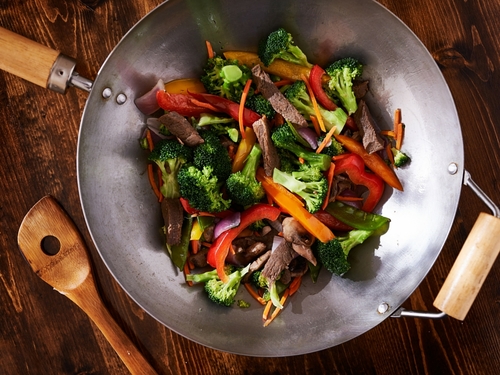What is Induction Cooking?


How induction cooking works
Induction cooking is a way of cooking without a flame. It uses electromagnets to induce a high frequency current through a suitable cooking implement, such as an induction wok or induction frying pan, when it comes into contact with the hob. When this current is broken, the heat generated automatically cuts out. Below is a great short video by Vollrath, which explains in a more visual way just how induction cooking technology works:
What are the benefits of induction cooking?
There are several great and unique benefits to induction cooking, which makes it very well-suited to a busy and demanding commercial kitchen environment.
It’s fast and efficient
With induction cooking there’s no prolonged wait for your hob to heat up your pan; it is the fastest, most responsive and efficient way to cook with a high level of control. And, once you are familiarised with the different heat settings on your induction hob, you are able tap into a more energy efficient way to cook as induction cooking heats only the bottom of the pan. This provides the precise amount of energy you need, without it escaping through the sides of the pan. Induction cooking can also help you get the perfect finish on your food, as unlike gas flame or electric hobs, it distributes heat evenly throughout the bottom of your pan. However, unlike gas cooking it does not provide a chargrilled effect to food, so depending on the types of dishes you cook and serve you may find that induction cooking will simply complement your existing cooking methods.
It’s clean and compact
Along with helping you to cook a steak to a perfect medium rare all over in an induction frying pan, the level of heat control that induction cooking offers should mean fewer splashes on the hob top – although with no ‘nooks and crannies’ for food to become trapped in on the flat induction hob surface, it is inherently easier to wipe clean and maintain. Switching to induction cooking can also be space saving, as induction tops can be placed on top of your existing kitchen units or even built in.
It could be cost-saving
The energy efficient nature of induction cooking appeals to many business owners and if your establishment is mobile, remotely located or not suitable for gas cooking for any other reason, then induction cooking could be the perfect solution – and even save you money. What you may need to bear in mind though is that induction hobs are only compatible with induction-suitable cookware. Many of your existing pots and pans may already be compatible, but you may need to replace others. We have a large range of affordable induction compatible pots and pans at Lockhart – take a look at our range here, or use the ‘Suitable for Induction’ filter on the left hand side of the page.
It’s safer for your staff
Last but not least, there’s the very important safety aspect of induction cooking hobs – they begin to cool down immediately and rapidly when the pan is removed from the surface, minimising the chances of a heat-related injury or accident in your kitchen. Yes, that means no more charred chefs’ whites, or damaged kitchen utensils!
And as heat is only generated when a suitable pan is placed on the top of the induction hob, there’s no worry about forgetting to switch off the gas. It also helps to reduce the overall temperature in your kitchen too – a welcome relief in more compact commercial kitchens.
Have you made the move to induction cooking? What have been the biggest advantages for you, and have you made any adaptations to your cooking practices? We’d love to hear about your induction cooking experiences or tips, so leave us a comment below.



Leave a comment